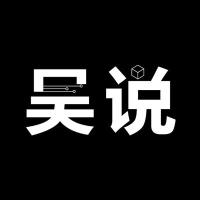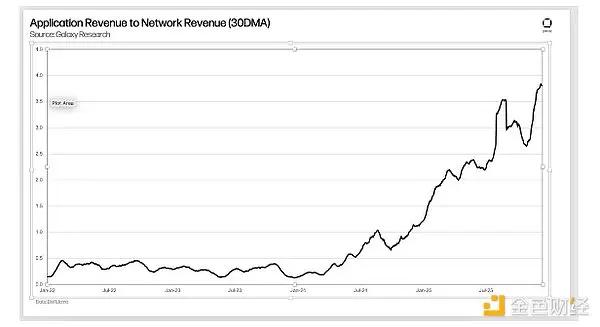Title: "Market Perspectives and Reflections from the East and West"
Author: Old White, Partner at ABCDE Research
It seems this is the longest period of inactivity on Twi. The reason is simple - as a blogger who never accepts sponsored posts, writing requires a desire to express, and the recent market conditions have made it difficult to feel that way. While the lackluster performance of the secondary market is a significant factor, the primary market's vibe may be the main reason for this lack of motivation to express.
However, I've observed some phenomena lately and have some thoughts to share, which may be quite lengthy, so I plan to split it into three or four parts: "The Primary Market from the Perspectives of East and West VCs", "New Signals in RWA", and "Some Noteworthy Things on ETH and Solana".
Let's start with the first topic today.
Over the past few weeks, I've chatted with a few of my Asian counterparts, and we've all unanimously entered a "pause" or "conservative" investment mode.
Our most recent deployment was in January, and similar cases of two to three months or even longer between investments are common among our peers.
The word that best describes the market sentiment is "boring" - or a temporary "consensus", if you will.
This sense of boredom is not entirely linked to the secondary market. I vividly remember that even after the Luna collapse, when the secondary market was sluggish, we were still excited about good expansion projects, discussions on ZK, innovative DeFi, GameFi, and AI. But this excitement has gradually faded since entering 2025.
The secondary market's apathy towards any narrative lasting only a few days naturally has an emotional contagion effect on the primary market, but a more concerning worry is - have we entered a stage where the "low-hanging fruit" has been largely picked, and now we're facing a prolonged period of adjustment, exploration, and transformation, accompanied by corresponding pains? I'll expand on this topic at the end, as the current state of Western VCs differs somewhat from the East.
It started with a DeFi project we invested in the Pre-seed round last year, which is now raising a Seed round. I initially thought that given the current state of the primary and secondary markets, just being able to raise the full amount would be satisfactory. But to my surprise, they ended up oversubscribed by several hundred million dollars, with European and American VCs eagerly pouring in. This result shocked me, as the project itself is decent but not at an S-level quality.
Why are European and American VCs still "firing away" while we Asians are "muted"? What are the reasons behind their willingness to pull the trigger on this valuation?
We discussed this internally and made some irresponsible speculations:
1. The establishment timeline of European and American VCs differs from ours in Asia, leading to different exit cycles and investment decision-making.
2. Asian VCs may have a "small-town student" mentality, focusing more on outperforming their peers or at least beating BTC (which is unlikely in the current market conditions). In contrast, European and American counterparts seem to have a stronger sense of idealism and long-termism, where the logic behind their investment decisions at a certain valuation is more important than the pursuit of returns.
3. A pure need to deploy funds, where they want to finish this round quickly to start raising for the next one, with management fees as the primary focus.
The specific reasons are unclear, so I've scheduled meetings with a group of European and American VC partners and researchers in the coming weeks. In addition to exchanging views on the market, I also want to directly ask them about the above question. Once I've gathered the information, I'll provide an update on Twi.
Now, let's talk about the "low-hanging fruit" issue, as I'd like to take this opportunity to discuss the future direction of Crypto.
First, neither I personally nor ABCDE have ever wavered in our long-term Bullish conviction on Crypto, which can be considered a kind of "faith". Otherwise, we wouldn't be pursuing this profession full-time.
However, in the short to medium term, we are indeed at a crossroads, and I'm not sure if it's similar to the one before the 2019 DeFi Summer. I'd like to share my thoughts with you on this.
The trigger was some recent insights I gained from listening to the AllianceDAO Podcast. Three points they made resonated with me:
1. Qiao said his current feeling is similar to 2019, not knowing what Crypto will bring next, until the 2020 DeFi Summer appeared and gave him a new direction.
2. They believe Crypto has only found one Product-Market Fit (PMF) over the years, and that is finance, specifically trading (DEX, CEX, Perp), lending, stablecoins, and Mint (asset issuance, e.g., Pumpfun).
3. They provided a lot of advice to their AI x Crypto startups, suggesting that if the Crypto elements in the project are too forced, it's better to remove Crypto altogether and just do pure AI. In fact, 30% of the projects did remove Crypto and became pure Web2 projects.
Regarding 1 - Although I had entered the Crypto space by 2019, I was simply trading coins at the time. To be honest, I'm not sure if VCs had the same "boredom" feeling back then. But from my recollection, there were still IEOs thriving, EOS exploring new directions, and Starkware proposing the ZK concept. Many of the 2020 DeFi Summer projects should have been established and invested in 2018-2019. Theoretically, the primary market sentiment should have been better than it is now. In other words, the belief in "the big thing is coming" was likely higher back then.
Regarding 2 - This is a response to 1, and it's also my biggest short-term concern - have we reached a crossroads different from 2019, where the "low-hanging fruit" has been largely picked?
If the biggest PMF for Crypto in terms of utility is finance, then the DeFi Summer and the subsequent years of iterative micro-innovations have essentially reached a boundary.
On the flip side of utility, which is also Crypto's forte - narrative direction, Meme is undoubtedly the best representative, and Pump.FUN has pushed this direction to a boundary in 2024.
Furthermore, in the past few years, when both utility and narrative were uncertain, our circle could at least compete on infrastructure. From ETH to EOS to Solana, and then to Aptos and Sui... I wonder if we have also reached a boundary in the expansion of blockchain infrastructure, with Solana's Firedancer, Monad, and MegaETH most likely launching their mainnet this year.
Regarding 3 - If all three paths (utility, narrative, and infrastructure) have reached their boundaries at this crossroads, is "blockchain modularization" the only path left? This is related to the third observation I mentioned earlier, which I also heard similar insights about in a YC Podcast.
By "modularization", I don't mean the kind of modularization that Celestia is doing, but rather abstracting the entire blockchain technology as a module and integrating it as a function into a startup, similar to how AI is used.
Most of the Crypto projects we see now are either completely based on Crypto or exist for the sake of Crypto, rather than solving real-world problems. This is often referred to as "Crypto Native", or less charitably, "self-indulgent within the circle".
The Web2 AI investment circle may have a similar problem, where many projects seem to be "AI for the sake of AI" rather than solving a specific real-world problem.
In the future, will the primary market see some kind of fusion or convergence of Web2 and Web3? A project must exist to solve a real-world problem, and in the process of solving that problem, it will incorporate Crypto elements where needed and AI elements where needed, but the core purpose and motivation are completely unrelated to Crypto or AI. Just like Meituan Waimai using 5G, platform software, big data, and AI task allocation, but its essence is a project to solve the problem of eating.
If Crypto's next big stage takes on this form, will everyone feel bored? Will the current Crypto-Native industry chain, including VCs, trading platforms, and studios, be able to continue?
The primary market is seeing more and more Payment and RWA-related projects, which somewhat align with the third idea. I've recently researched Ondo's Global Market and talked to a few RWA projects, so the next article will be dedicated to the new directions in the RWA track.







